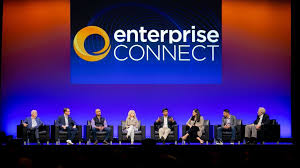What Is Multifactor Authentication (MFA)?
Time to read: 4 minutes

Let’s face it: sometimes, the internet can be scary. Whether via smartphone apps or desktop computers, the internet helps us connect with friends and family wherever we are. It can also expose us to cybercriminals eager to steal credit card numbers, usernames and passwords, private photos, and much more.
Protection against these threats is critical, and that’s what multifactor authentication (MFA) does. But what is MFA? Read on for a multifactor authentication definition, benefits, ideal use cases, and more.
What is MFA in cybersecurity?
MFA verifies a user’s identity with 2 or more credentials prior to device, database, or application access. It’s a powerful and increasingly popular way to protect users and employees alike.

How does multifactor authentication work?
As the name implies, multifactor authentication requires users to complete one or more extra steps to log into an MFA-enabled account. These steps are authentication factors. A username-password combination is the first factor, and subsequent required factors (like security questions, among others) give MFA its name.
Multifactor authentication vs. two-factor authentication
Multifactor authentication and two-factor authentication (2FA) are similar authentication methods, but 2FA requires users to confirm their identity using only 2 types of authentication. So after a user enters their username and password, they’ll have to pass another authentication check to access their desired page, account, or content.
MFA works the same, except it requires 2 or more factors to identify a user successfully. This means that 2FA is a form of MFA, but MFA isn’t necessarily 2FA. Of course, the security level of both depends on the strength of the chosen authentication methods, so MFA isn’t always more secure than 2FA. Likewise, 2FA won’t always be enough, such as when email is the delivery channel for ongoing verification.

What multifactor authentication factors can you use?
MFA factors protect organizations and users with:
- Security questions: When a user signs up for an account, they may have to provide a question and answer they can recall reliably. Later, during the authentication process, they’ll receive their provided question and have to provide the correct answer.
- Locations: A verification of a user’s current IP address or geographic location against previously recorded data ensures that a login attempt is valid.
- Security tokens and certificates: MFA allows you to embed physical objects, such as badges, mobile phones, smart cards, and USB drives, with chips that contain a security token or certificate. In physical contexts, such as a bank or workplace, users may have to present one such object during authentication.
- Biometrics: Each user’s unique body traits—including fingerprints, voices, faces, retinas, and irises—can be an authentication factor. For instance, users may need to scan their finger on a device or say a particular phrase into a microphone.
- One-time passwords (OTPs): Unless a user or service requests to change their password, it’ll remain the same forever. So if a cyberattacker gets that password, that user is no longer secure. Some OTPs are generated and deactivated after a certain time via smartphone apps like Google Authenticator and Authy, while others get sent to the user via text or email.
What are possible multifactor authentication use cases?
Here are some ways MFA can protect people and organizations against cyberattacks:
- Email: If it’s been a long time since you’ve last logged into your email account, your email client may ask you to pass an MFA check after you enter your username and password.
- Banking: Regarding finances, security is paramount. MFA reinforces checking and savings accounts.
- Social media: Impersonation and data theft are massive problems on social media platforms. MFA helps mitigate them.
- Cloud technology: Services like Google Drive host many users’ and organizations’ files, which may contain personal and proprietary information. MFA helps protect these files against malicious actors.

Benefits of multifactor authentication
Users who enter multiple factors of authentication can protect themselves from harm because the would-be attacker will lack the necessary information or device to pass the MFA check. Here are 3 risky scenarios that MFA-enabled goods and services can help avert:
1. Password attacks
People generate usernames and passwords, so users typically make them easy to remember and reuse across different accounts. Unfortunately, this practice makes it easier for cyberattackers to figure out their credentials through social engineering or unauthorized database entry. After all, attackers only need a victim’s basic information, such as nicknames or birthdays. With MFA enabled, you effectively nullify these attacks because you require the user to enter information that only they would know.
2. Phishing
Despite being careful to mitigate the threat of deceitful emails, many users still succumb to phishing attempts that put their credentials and personal information at risk. MFA ensures that even if a username and password get stolen via phishing, the attacker won’t be able to access the victim’s account because they’ll still need some other information—like an OTP or security token on a physical device.
3. Physical impersonation
When an MFA-enabled product or service requires a user to present an object that contains a digital security token or certificate, that user is the only person who can pass that MFA check since they’re the only ones who have access to the unique digital key. For instance, when you pass a website login’s username and password check, the site could ensure you’re that person by having you plug a physical USB drive into your computer.
Strengthen your account security with Twilio Verify
Ready to protect yourself, your organization, and your users against harmful cyberattacks with multifactor authentication? Of course, doing so at scale can be tricky. But we can help. With the Twilio Verify API, it’s fast to validate your users over popular channels like SMS.
Discover how to make account security across your organization more robust with features like MFA from Twilio Verify.
Related Posts
Related Resources
Twilio Docs
From APIs to SDKs to sample apps
API reference documentation, SDKs, helper libraries, quickstarts, and tutorials for your language and platform.
Resource Center
The latest ebooks, industry reports, and webinars
Learn from customer engagement experts to improve your own communication.
Ahoy
Twilio's developer community hub
Best practices, code samples, and inspiration to build communications and digital engagement experiences.


